3.07.2023


A SpaceX Falcon 9 rocket lifts off from Cape Canaveral Space Force Station in Florida at 11:12 a.m. EDT on Saturday, July 1, carrying the ESA (European Space Agency) Euclid spacecraft, which has contributions from NASA.
NASA is contributing to the European Space Agency mission, which will complement dark energy studies by the agency’s upcoming Nancy Grace Roman Space Telescope.
The ESA (European Space Agency) Euclid spacecraft lifted off from Cape Canaveral Space Force Station in Florida at 11:12 a.m. EDT on Saturday, July 1, beginning its mission to study why the universe is expanding at an accelerating rate. Astronomers use the term “dark energy” in reference to the unknown cause of this accelerated expansion.
NASA’s Jet Propulsion Laboratory in Southern California delivered critical hardware for one of the Euclid spacecraft’s instruments. In addition, NASA has established a U.S.-based Euclid science data center, and NASA-funded science teams will join other Euclid scientists in studying dark energy, galaxy evolution, and dark matter. The agency’s forthcoming Nancy Grace Roman mission will also study dark energy – in ways that are complementary to Euclid. Mission planners will use Euclid’s findings to inform Roman’s dark energy work.
After the Euclid spacecraft separated from the second stage of a SpaceX Falcon 9 rocket, ESA announced a successful launch. Euclid will undergo a series of checks and calibrations before it starts collecting science data in about three months.
“We are thrilled about the successful launch of ESA’s Euclid mission and are eager to see the science it returns,” said Nicola Fox, associate administrator for NASA’s Science Mission Directorate in Washington. “By studying the ‘dark side’ of our universe, Euclid is not only paving the way for NASA’s Roman Space Telescope, it is igniting a new golden age of survey astronomy that will help us understand our universe’s history and structure in ways that were not possible before.”
Illuminating Dark Energy
The Euclid mission could help scientists determine whether our current understanding of gravity needs to be rewritten or if an entirely new mechanism is needed to explain the universe’s accelerating expansion.
Euclid will create a cosmic map that covers almost a third of the sky, charting the location of millions of galaxies and measuring the average spacing between them – one indicator of dark energy’s influence. Because the light from distant objects takes time to reach us, Euclid will observe galaxies as they were when the universe was about 3 billion years old. By also looking at closer galaxies, the mission will track how dark energy’s effect has changed over time.
Euclid will also study dark energy by mapping the presence of another mysterious cosmic phenomenon called dark matter. Five times more common in the universe than regular matter, dark matter is distributed throughout the cosmos. While dark matter does not absorb or reflect light, scientists can detect it via its gravitational influence on “regular” matter like stars and galaxies, and its distribution throughout the cosmos is affected by dark energy’s outward push.
Scheduled to launch by May 2027, Roman will study a smaller section of sky than Euclid, but it will provide higher resolution images of millions of galaxies and peer deeper into the universe’s past, providing complementary information. Roman will also survey nearby galaxies, find and investigate planets throughout our galaxy, study objects on the outskirts of our solar system, and more.
More About the Mission
Three NASA-supported science teams contribute to the Euclid mission. In addition to designing and fabricating the sensor-chip electronics for Euclid’s Near Infrared Spectrometer and Photometer (NISP) instrument, JPL led the procurement and delivery of the NISP detectors as well. Those detectors, along with the sensor chip electronics, were tested at NASA’s Detector Characterization Lab at Goddard Space Flight Center in Greenbelt, Maryland. The Euclid NASA Science Center at IPAC (ENSCI), at Caltech in Pasadena, California, will archive the science data and support U.S.-based science investigations. JPL is a division of Caltech.
Quelle: NASA
+++
EUCLID SPACE TELESCOPE LAUNCHES TO EXPLORE DARK ENERGY, DARK MATTER
he European Space Agency’s New Space Telescope promises to unlock a key mystery of modern cosmology.
The European Space Agency’s New Euclid Space Telescope promises to unlock a key mystery of modern cosmology.

ESA
A SpaceX Falcon 9 rocket roared skyward over Cape Canaveral Space Force Station today at 11:12 AM Eastern Time (15:12 Universal Time), carrying the European Space Agency’s Euclid Telescopeinto space. The launch was nominal and the ESA reported that Euclid was in good health, separating from the Falcon upper stage 41 minutes after launch.
The mission is headed to a stable Lissajous halo orbit around the Sun-Earth L2 Lagrange point, 700,000 miles (or over 1.1 million kilometers) beyond the orbit of the Moon in the anti-sunward direction. Euclid will join NASA's James Webb Space Telescope (JWST) and ESA’s Gaia mission at the L2 point.

The road to the launch pad was a long one. First conceived in 2007 as two separate missions, the Dark Universe Explorer and the Spectroscopic All-Sky Cosmic Explorer (SPACE), Euclid is an M(Medium)-class mission, and part of ESA’s Cosmic Visions program. The 600 million Euro telescope was a comprise of the two original missions. Euclid’s 1.2 meter mirror and other components have a unique silicon carbide design, ideal for the cold of space as it won’t expand or flex with temperature fluctuations—but difficult to work with. It took several failures, cracked components and two years longer than planned to build Euclid.

ESA/Safran Reosc
Euclid also employs a simple grating prism or ‘grism,’ as a means to capture the spectra of the galaxies across the 0.5 degree field of view of its Near-Infrared Spectrometer and Photometer (NSIP) camera at once. Unfortunately, plans for an innovative light-splitting spectrograph employing thousands of tiny switchable mirrors had to be scrapped, due to added complexity and cost.
The mission was originally planned to launch on a Soyuz rocket in early 2023, but Russia’s 2022 invasion of Ukraine forced ESA to search for a new launch carrier. Ultimately, SpaceX stepped in to provide a Falcon 9 rocket to get Euclid to space.

ESA
NASA is also a partner in the Euclid mission, and built 20 detectors included with the observatory’s near infrared band instrument. 40 U.S. scientists are also participating in the Euclid consortium.
The mission of Euclid is designed to pin down the equation of state for dark energy, the term for whatever is causing the universe's expansion to accelerate. Albert Einstein famously proposed and then rejected a similar force, which he called the cosmological constant. But it wasn't until 1999 that astronomers actually saw the accelerated expansion while measuring standard candles known as Type Ia supernovae.
Dark energy soon became part the standard model of cosmology, which also includes the effects of dark matter. The model is buttressed by patterns observed in the cosmic microwave background, galaxy clusters, and observations of hundreds of supernovae. These and other measurements show the universe is composed of 5% "normal" (baryonic) matter, 27% dark matter, and 68% dark energy.
This means that the universe is mainly dark matter and dark energy — most of what we can see, such as stars, galaxies and ourselves, is a small piece of the whole. Our current understanding of dark energy puts its equation of state, or w, at a value of -1, which translates to an ever-expanding universe.

NASA/WMAP
The aim of Euclid is to refine this equation of state. If, for example, the equation of state falls slightly below or above -1, or if w actually changes with time rather than remaining constant, such a finding could hint at new and as-yet undiscovered regions of physics. To measure the effects of dark matter and dark energy over cosmic time, Euclid will scan a third of the sky and survey a billion galaxies out to when the universe was only a quarter of its current 13.8 billion-year age.
"Euclid has been designed to accurately measure the expansion history of the universe and the growth of cosmic structures over the past 10 billion years," says Mike Seiffert (NASA). "We'll do this by measuring the the accurate three-dimensional positions of tens of millions of galaxies and the precise shapes of over a billion galaxies and use statistical techniques to understand the universe's expansion and structure."
To this end, Euclid will use a 'step-and-stare' method to cover one third of the sky. While JWST can see fainter objects at higher resolution, Euclid can cover a larger swath of the sky in a short period of time.
As this survey probes back those 10 billion years (to a redshift of 2), it will probe the transition from early times, when the effects of gravity dominated over dark energy, to the current era in which dark energy dominates. Euclid's near-infrared spectrometer will measure galaxies' distances and look at how they cluster to measure ripples in the primordial universe known as baryonic acoustic oscillations. In addition, near-infrared and visible-light imaging will measure distortions in galaxies' shapes via gravitational lensing due to the gravitational effects of intervening dark matter.
"Euclid is designed as a survey telescope," says Seiffert. "It will be efficient at imaging and spectral data on distant galaxies in a given field, and after 15 minutes or so it will move on to the next field. In this way, it will build up the data on an enormous number of galaxies in over a third of the sky over the course of six years."
Euclid will soon be joined in the hunt for dark energy by NASA’s Nancy Grace Roman space telescope launching in 2027, and the Vera Rubin Observatory is expected to see first light in August 2024.
The mission is now on its way to L2, and should arrive in early August for a 3-month long commissioning phase, followed by a six year long primary mission. Perhaps, Euclid and the exciting new generation of telescopes will finally solve one of the major modern mysteries of modern cosmology.
Quelle: Sky&Telescope
----
Update: 20.07.2023
.
Euclid calling: downloading the Universe

In brief
Euclid, ESA’s newest science mission, will soon begin capturing faint light from the early universe to uncover the secrets of dark matter and dark energy. The spacecraft’s instruments will capture light that has been travelling for 10 billion years and it will then need to transmit an unprecedented volume of data back to Earth – 100 GB every day for six years. It’s taken a lot of time, effort and ingenuity, but ESA’s ‘ground segment’ is ready to download the Universe.
In-depth
Just as one hand alone can’t clap, a mission in space can’t be heard without a complex combination of physical infrastructure and data systems on Earth; for monitoring and control of the spacecraft, data management, ground stations and telecommunication networks.
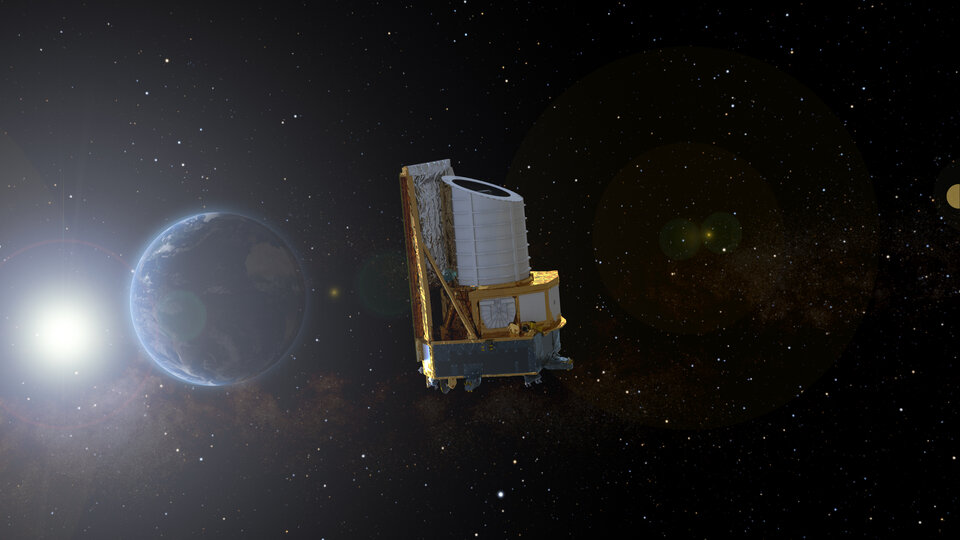
The scale and complexity of the Euclid mission will place high demands on ESA’s ground operations, and the Agency has been getting ready.
“Through years of technological advancements, standardisation efforts and the operational adoption of innovative engineering solutions we have successfully tackled the challenges for the ground segment of this extraordinary mission,” says Mariella Spada, Head of Ground Systems Engineering and Innovation at ESA.
Creating a conduit for Euclid’s science data
Every science mission has its own unique constraints and requirements depending on what it hopes to achieve over its lifetime. In the case of Euclid, it is designed to create the largest, most accurate-ever 3D map of the Universe. Euclid’s instruments collect ultra-accurate images in order to identify faint distortions in the shape of very distant galaxies.

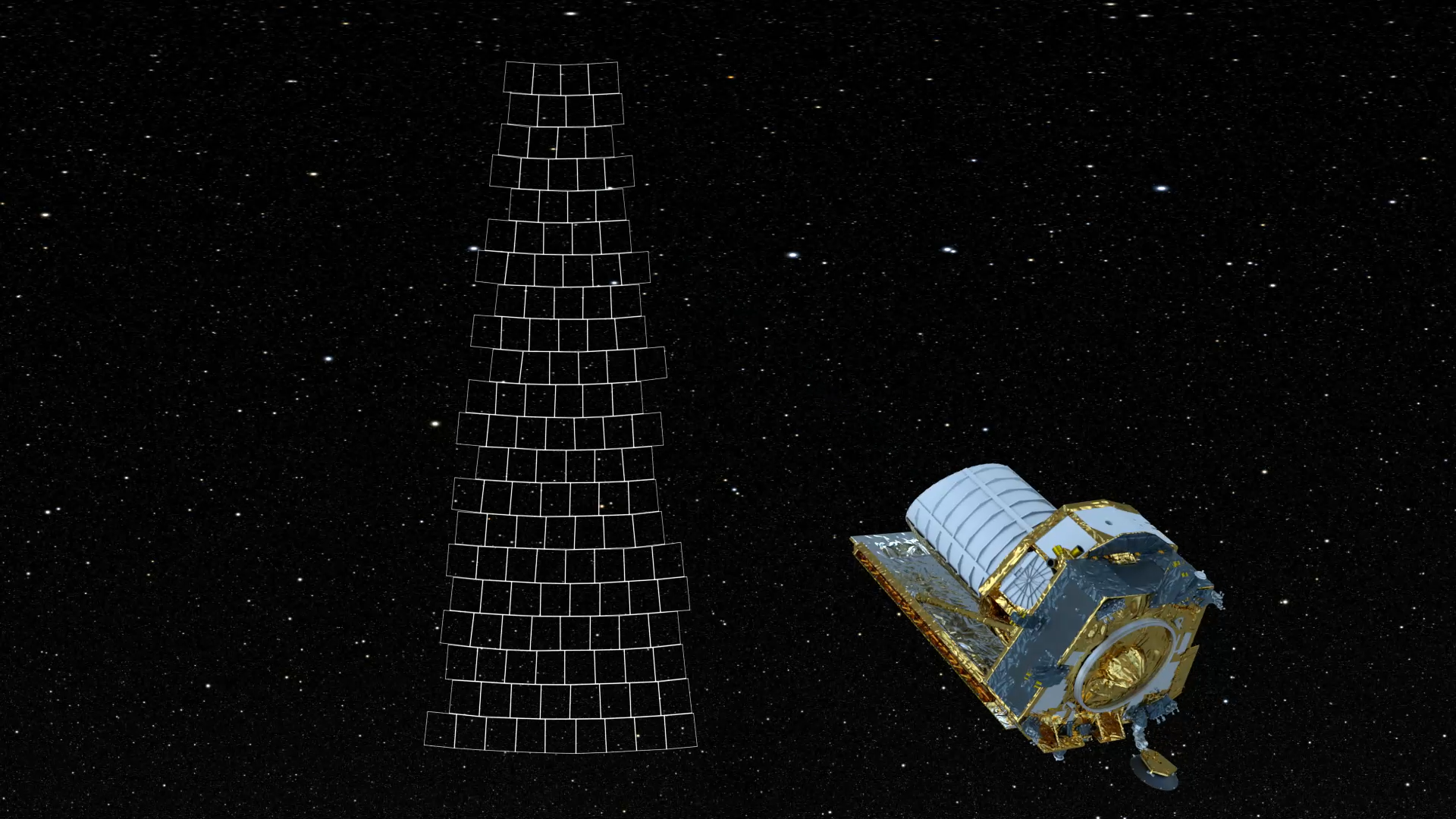
Access the video
The value of these images lies in their incredible preciseness and detail. This takes the image file size into the gigabytes and leads to the key challenge for the mission’s ground segment: getting up to 100 GB of big files downlinked every day during a limited, four-hour time window.
That’s roughly twice the daily data volume that space telescopes like James Webb and Gaia transmit from the same orbit at Lagrange point 2, 1.5 million kilometres from Earth. With Euclid’s shorter ‘passes’ – talk time – with ESA ground stations, this has required the Euclid ground segment to become especially efficient to enable such a large flow from Euclid to Earth and onwards to science teams.
Upgrading deep space antennas Cebreros and Malargüe
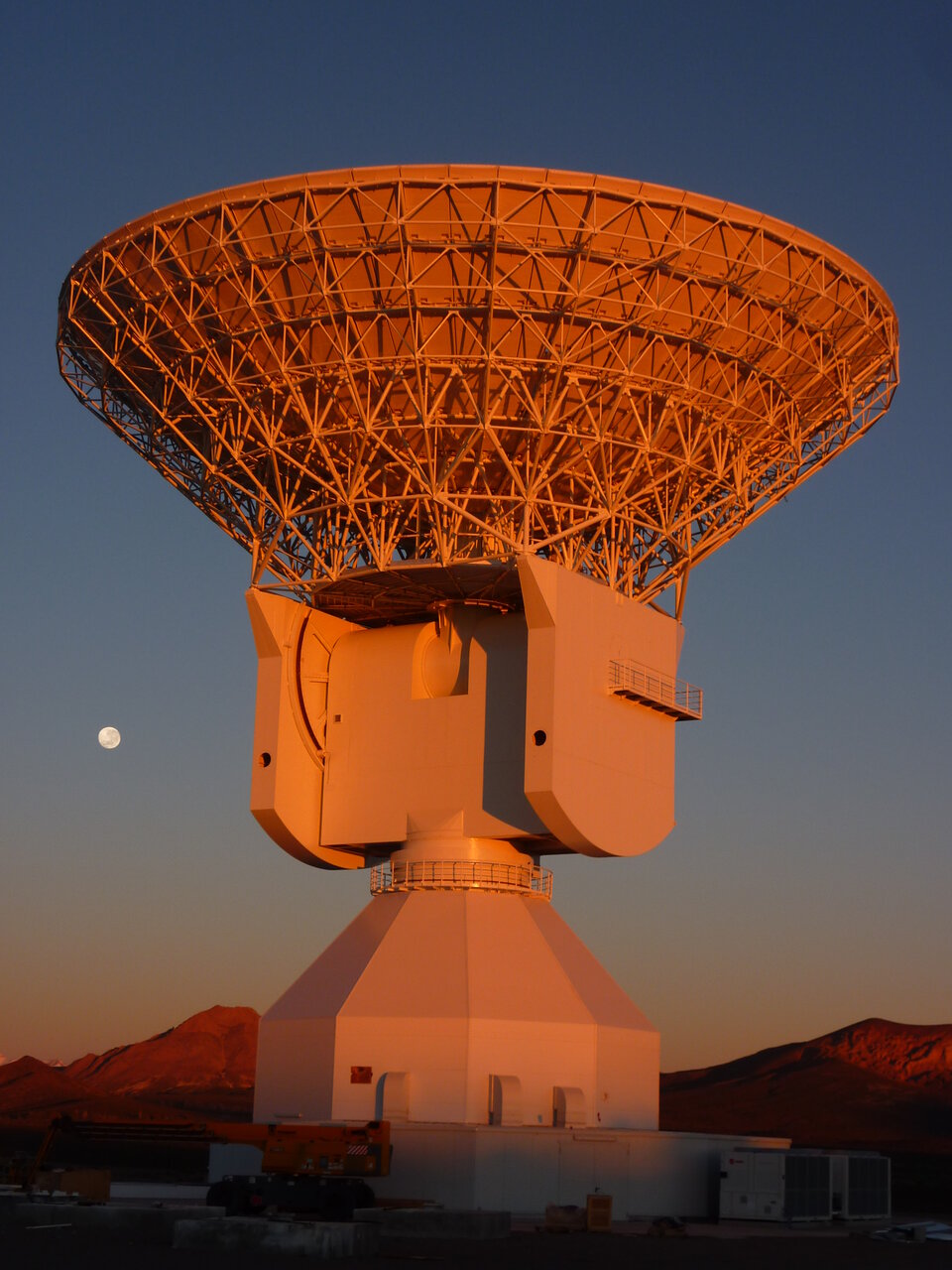
The first step was to make it possible to sustain a high data downlink rate of up to 75 megabits per second between Euclid and the Estrack ground stations to download all its data comfortably and efficiently within four hours.
If Euclid were to transmit data in the same way as ESA's Gaia mission, also orbiting at ‘L2’, it would hopelessly congest ground stations as it sends twice the amount of data.
To make it possible to beam so much data in such a short time, two of ESA’s 35 m antennas had to be upgraded in various ways. First, Euclid will be ESA’s first science mission at the second Lagrange point to use the higher frequency ‘K-band’ (26 GHz), which enables a higher data rate.
“Faster communication lines were installed between the control centre in Germany and the ground stations located in Spain and Argentina. And that’s just the start of the list," says Åge-Raymond Riise, Station Coordinator for Euclid.
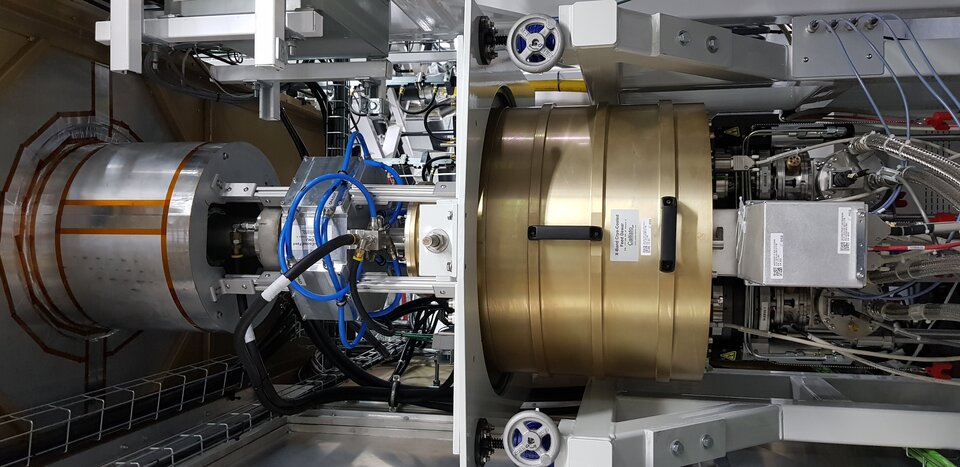
“We have four new cryogenically cooled ‘low-noise amplifiers’ in each station for receiving the signals from space.”
By cooling the ‘antenna feed’ to just 10 degrees above the lowest temperature possible in the Universe, increasing the amount of data that can be downlinked from spacecraft by up to 40%.
New ‘file transfer protocols’ have also been set up, a new generation of ground station modems are in use and moving mirrors have been built to route Euclid’s signal to the new equipment.
And that’s not all. This 26 GHz frequency benefits large data volumes, but the connection itself is less stable as it can lose strength due to the influence of water in the atmosphere, potentially causing data loss. Further engineering went into safeguarding against such data loss, benefiting not just Euclid but also other ESA missions that also use high frequencies.
Adding a black box to the ground stations
When receiving a transmission at a ground station, the useful data is extracted from ‘packets’ that function like a kind of envelope with instructions. The unpacked, uncoded data constitutes only about half the data Euclid sends. This is then sent on to mission control at ESA’s European Space Operations Centre (ESOC), in Darmstadt, Germany, through a private, secure connection established especially for this purpose.
Normally, the check for data completeness is done at the mission control centre, followed by sending a command to the spacecraft to retransmit data if necessary.

“In this case, the link between Euclid itself and the ground stations at Cebreros or Malargüe is much faster than the connection from the ground stations to mission control at ESOC,” explains Arek Kowalczyk, Euclid Data Systems Manager.
“We can’t afford to wait until all data has arrived at the mission control system to check if any part is missing. Instead, we developed a piece of software that runs on a Euclid-dedicated machine at the ground station. It consolidates the parts of a data file and forwards only the instructions concerning any missing data to the mission control system at ESOC, from where they can request the missing parts to be retransmitted to ground. Only once the file is complete, is it transferred to ESOC.”
This automated solution avoids data loss and allows any required retransmission to be performed automatically.
Dragging and dropping files to space
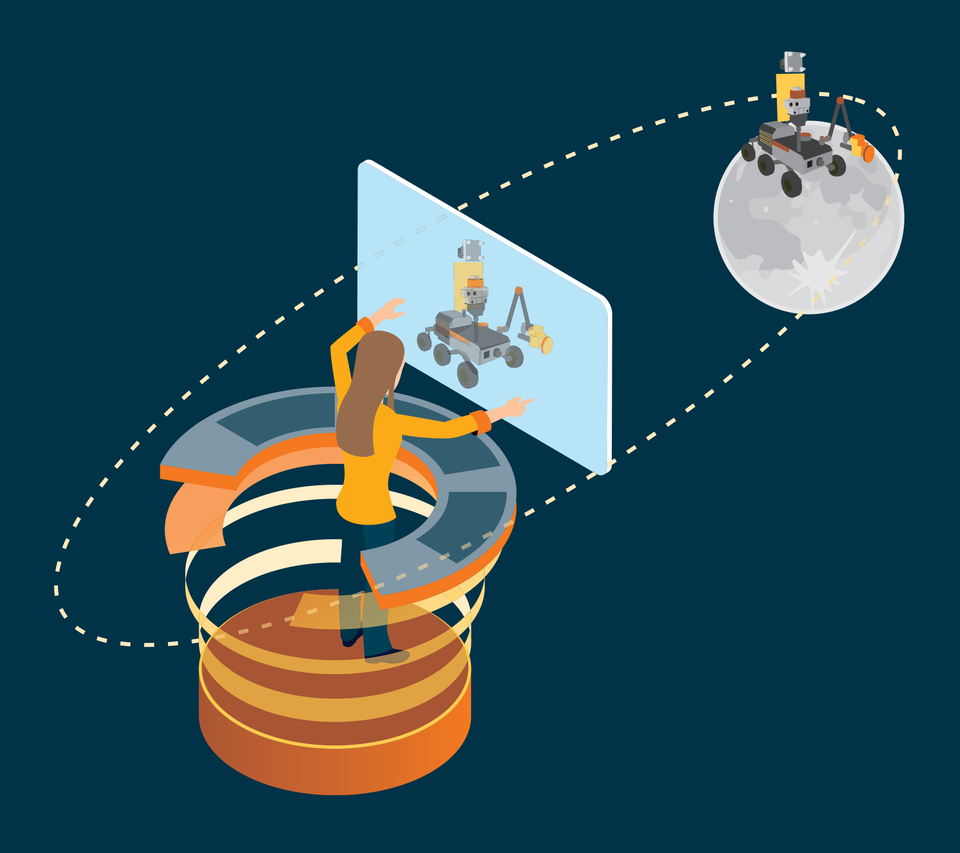
Euclid’s large images inspired a new on-board data handling system, meaning it can handle any kind of files and not only the usual data packets which have stringent data formatting requirements.
The flight controllers now have a much more intuitive, graphical interface, lowering complexity and reducing both the potential for human error and the amount of training required. It even allows the operators to drag and drop files to upload to, or download from, Euclid in space.
Most importantly perhaps, scientists don’t need to format their data in a specific way. They can have their instruments create whatever file format works best for them, and they receive their files exactly as they want them.
Keeping up with Euclid
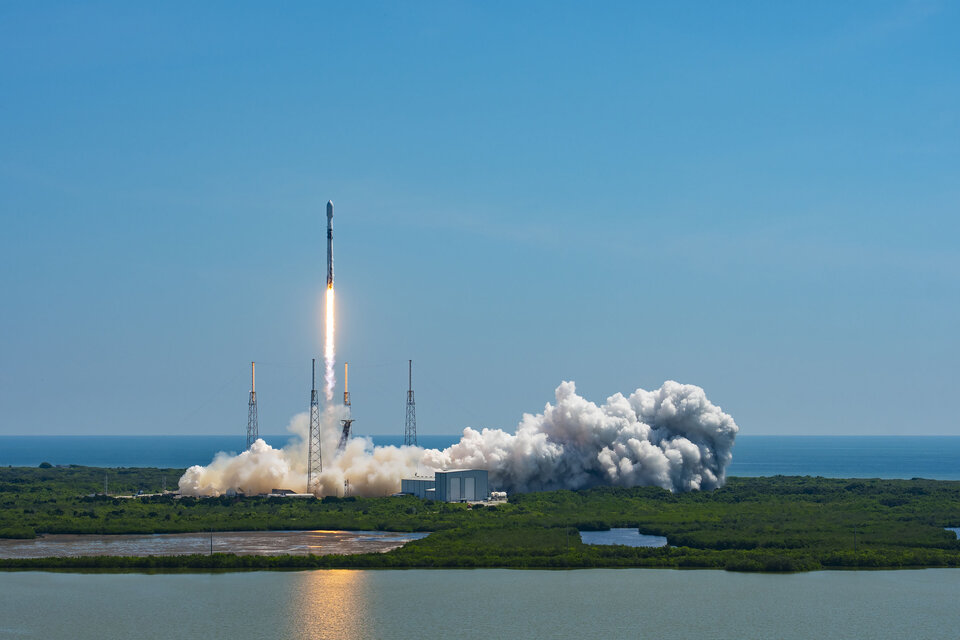
Euclid’s launch went smoothly and commissioning continues, but for everyone in the data operations teams, the most demanding time is still ahead.
It will be a relentless task to keep up with Euclid, processing large amounts of data in the tight time windows during ground station passes, but it's one they are more than ready for.
“We are now fully prepared to download the 'Universe' from Euclid,” says Mariella Spada. “This is the result of the hard work and resourcefulness of the team, along with many colleagues from ESA and beyond who contributed to this success.”
Quelle: ESA
----
Update: 1.08.2023
.
Euclid Mission to Study Dark Universe Takes First Test Images

The telescope took a picture of a glittering field of stars, indicating that it is doing well after a million-mile journey from Earth.
The two instruments aboard Euclid, an ESA (European Space Agency) spacecraft with NASA contributions, have captured their first test images. The results indicate that the space telescope will achieve the scientific goals that it has been designed for – and possibly much more.
The mission will delve into some of the biggest mysteries about our universe, including the nature of dark matter and why the universe’s expansion is accelerating. Scientists call the force behind this accelerated expansion “dark energy.”
Euclid launched July 1 from Cape Canaveral, Florida. It has arrived at its destination about 1 million miles (1.5 million kilometers) from Earth, a vantage point known as the Second Lagrange Point (L2).
“We are thrilled to see that the NASA-supplied detectors and other hardware are working as expected and are incredibly excited about the scientific results that will come in the months and years ahead,” said Mike Seiffert, project scientist for the NASA contribution to Euclid at the agency’s Jet Propulsion Laboratory in Southern California.
Given these test images, scientists and engineers behind the mission are confident that telescope and instruments are working well. Mission specialists will continue performance-verification tests for the next couple of months before science observations begin.
“After more than 11 years of designing and developing Euclid, it’s exhilarating and enormously emotional to see these first images,” says Euclid Project Manager Giuseppe Racca of ESA. “It’s even more incredible when we think that we see just a few galaxies here, produced with minimum system tuning. The fully calibrated Euclid will ultimately observe billions of galaxies to create the biggest-ever 3D map of the sky.”
More About the Mission
Three NASA-supported science teams contribute to the Euclid mission. In addition to designing and fabricating the sensor-chip electronics for Euclid’s Near Infrared Spectrometer and Photometer (NISP) instrument, JPL led the procurement and delivery of the NISP detectors. Those detectors along with the sensor chip electronics were tested at NASA’s Detector Characterization Lab at Goddard Space Flight Center in Greenbelt, Maryland. The Euclid NASA Science Center at IPAC (ENSCI), at Caltech in Pasadena, California, will archive the science data and support U.S.-based science investigations using Euclid data. JPL is a division of Caltech.
Quelle: NASA
+++
Euclid test images tease of riches to come

Euclid’s two instruments have captured their first test images. The mesmerising results indicate that the space telescope will achieve the scientific goals that it has been designed for – and possibly much more.
Although there are months to go before Euclid delivers its true new view of the cosmos, reaching this milestone means the scientists and engineers behind the mission are confident that the telescope and instruments are working well.
“After more than 11 years of designing and developing Euclid, it’s exhilarating and enormously emotional to see these first images,” says Euclid project manager Giuseppe Racca. “It’s even more incredible when we think that we see just a few galaxies here, produced with minimum system tuning. The fully calibrated Euclid will ultimately observe billions of galaxies to create the biggest ever 3D map of the sky.”
ESA Director General Josef Aschbacher congratulates the Euclid team: “It is fantastic to see the latest addition to ESA’s fleet of science missions already performing so well. I have full confidence that the team behind the mission will succeed in using Euclid to reveal so much about the 95% of the Universe that we currently know so little about.”
Carole Mundell, ESA’s Director of Science agrees: “Our teams have worked tirelessly since the launch of Euclid on 1 July and these first engineering images give a tantalising glimpse of the remarkable data we can expect from Euclid.”
Yannick Mellier, Euclid Consortium lead adds: “The outstanding first images obtained using Euclid’s visible and near-infrared instruments open a new era to observational cosmology and statistical astronomy. They mark the beginning of the quest for the very nature of dark energy, to be undertaken by the Euclid Consortium.”
The Universe in visible light
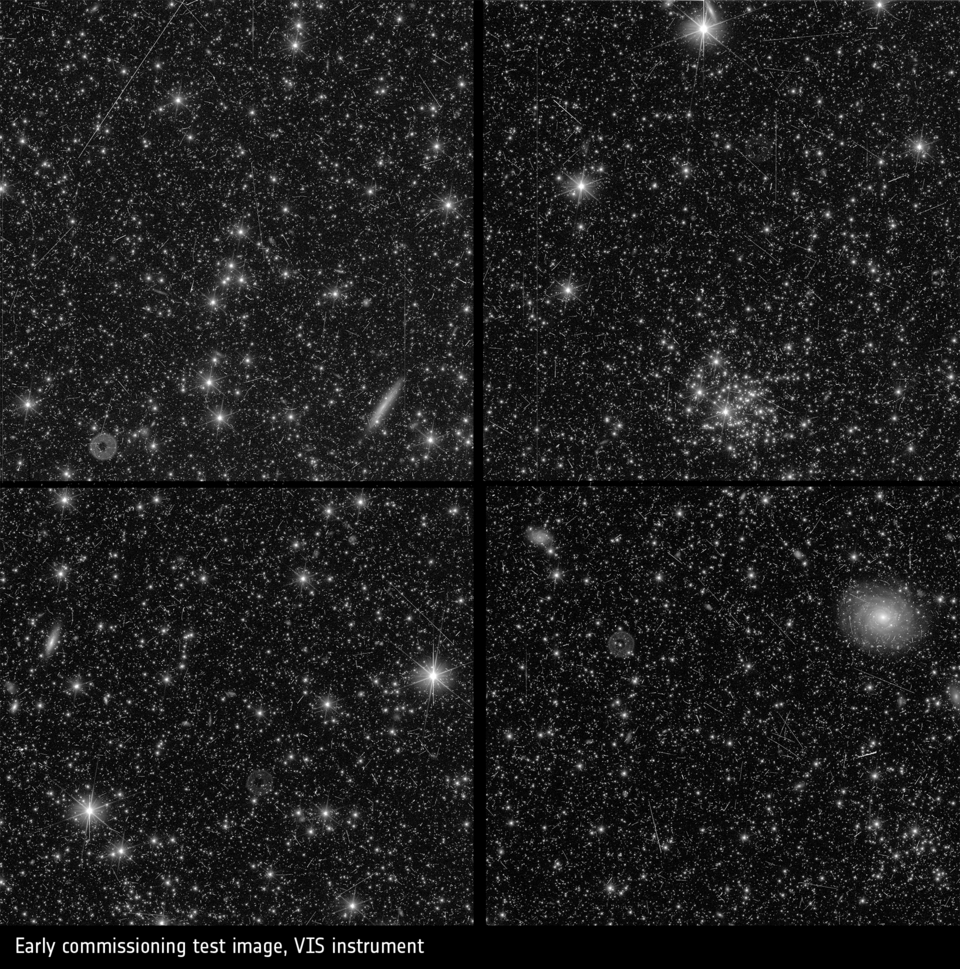
Euclid’s VISible instrument (VIS) will take super sharp images of billions of galaxies to measure their shapes. Looking closely at this first image, we already get a glimpse of the bounty that VIS will bring; whilst a few galaxies are very easy to spot, many more are fuzzy blobs hidden amongst the stars, waiting to be unveiled by Euclid in the future. Though the image is full of detail, the area of sky that it covers is actually only about a quarter of the width and height of the full Moon.
Mark Cropper from University College London led the development of VIS: “I’m thrilled by the beauty of these images and the abundance of information contained within them. I’m so proud of what the VIS team has achieved and grateful to all of those who have enabled this capability. VIS images will be available for all to use, whether for scientific or other purposes. They will belong to everybody.”
Reiko Nakajima, VIS instrument scientist adds: “Ground-based tests do not give you images of galaxies or stellar clusters, but here they all are in this one field. It is beautiful to look at, and a joy to do so with the people we've worked together with for so long.”
The image is even more special considering that the Euclid team was given a scare when they first switched the instrument on: they picked up an unexpected pattern of light contaminating the images. Follow-up investigations indicated that some sunlight was creeping into the spacecraft, probably through a tiny gap; by turning Euclid the team realised that this light is only detected at specific orientations, so by avoiding certain angles VIS will be able to fulfil its mission. This image was taken at an orientation where the sunlight was not an issue.
The Universe in infrared light
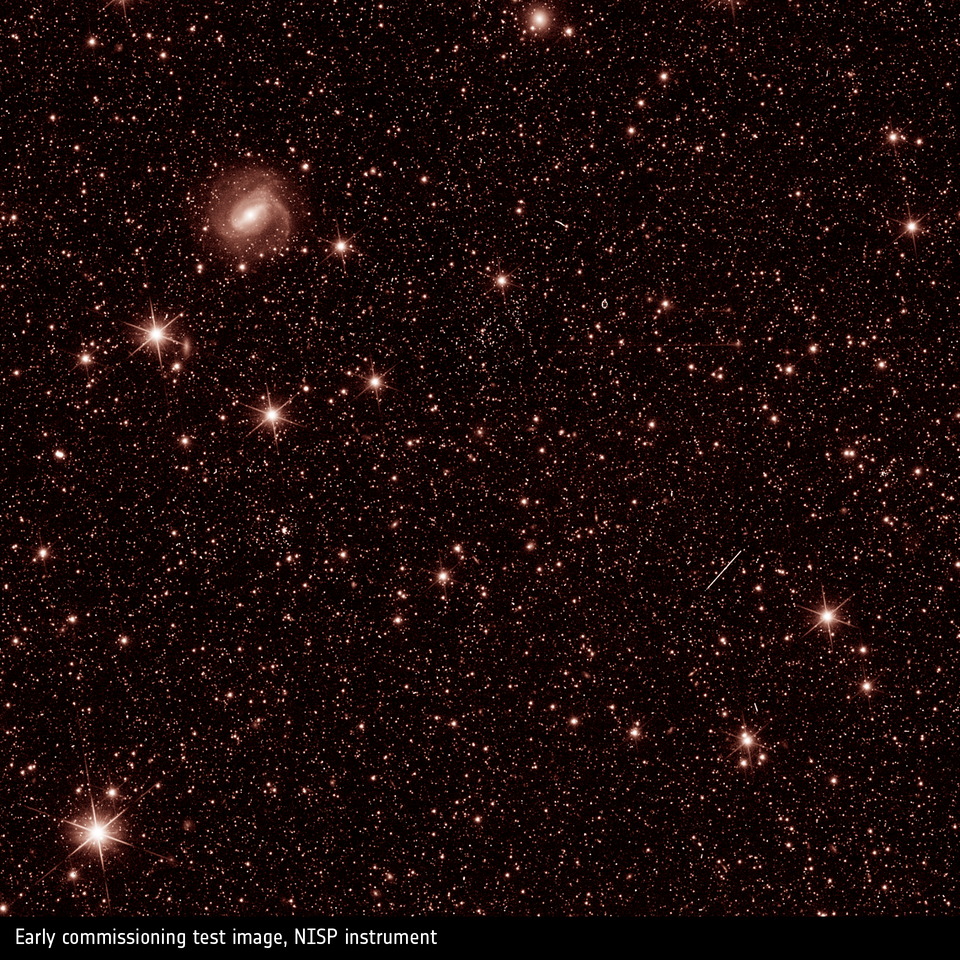
Euclid’s Near-Infrared Spectrometer and Photometer (NISP) instrument has a double role: imaging galaxies in infrared light and measuring the amount of light that galaxies emit at various wavelengths. This second role lets us directly work out how far away each galaxy is.
By combining distance information with that on galaxy shapes measured by VIS, we will be able to map how galaxies are distributed throughout the Universe, and how this distribution changes over time. Ultimately, this 3D map will teach us about dark matter and dark energy.
In the image below, before reaching the NISP detector the light from Euclid’s telescope has passed through a filter that measures the brightness at a specific infrared wavelength.
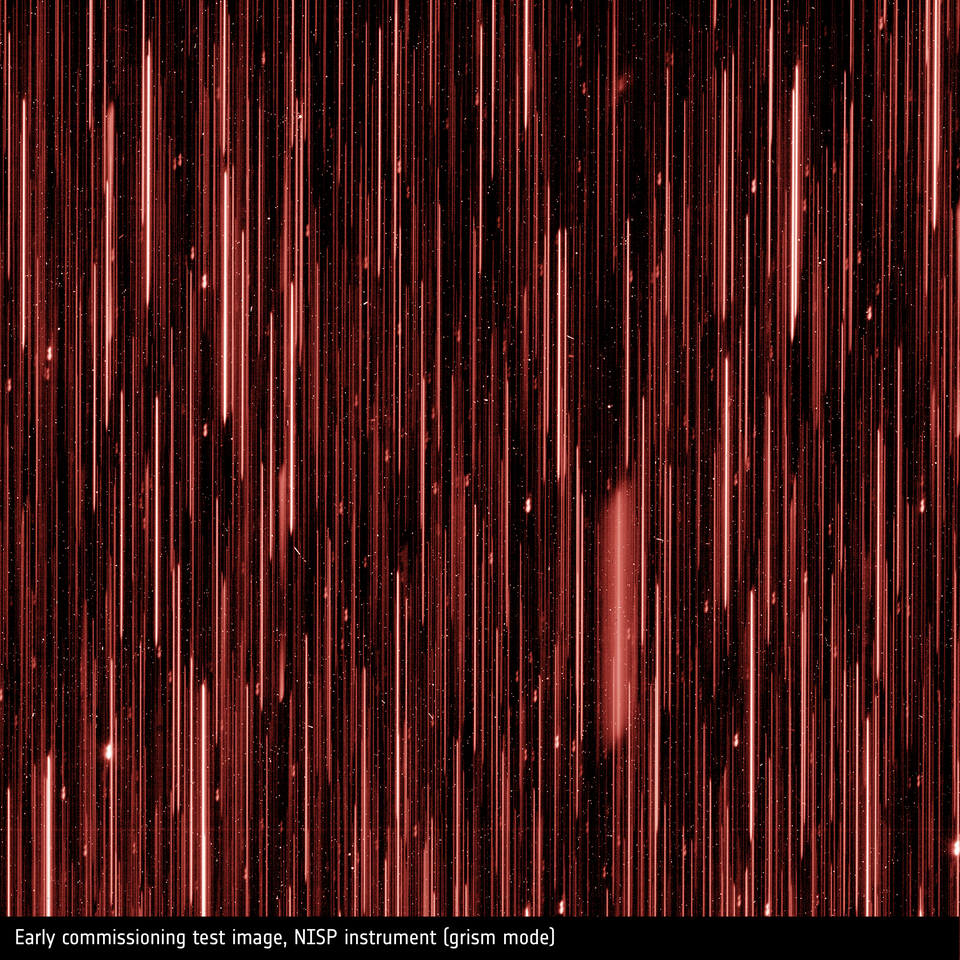
In this second image, the light from Euclid’s telescope had passed through a ‘grism’ before it reached the detector. This device splits light from every star and galaxy by wavelength, so each vertical streak of light in the image is one star or galaxy. This special way of looking at the Universe allows us to determine what each galaxy is made of, which allows us to evaluate its distance from Earth.
NISP instrument scientist Knud Jahnke says: “We’ve seen simulated images, we’ve seen laboratory test images – it’s still hard for me to grasp these images are now the real Universe. So detailed, just amazing.”
NISP instrument scientist William Gillard adds: “Each new image we uncover leaves me utterly amazed. And I admit that I enjoy listening to the expressions of awe from others in the room when they look at this data.”
On the road to science
It is worth noting once more that these snapshots – beautiful though they are – are still early test images, taken to check the instruments and review how the spacecraft can be further tweaked and refined. Because they are largely unprocessed, some unwanted artefacts remain – for example the cosmic rays that shoot straight across, seen especially in the VIS image. The Euclid Consortium will ultimately turn the longer-exposed survey observations into science-ready images that are artefact-free, more detailed, and razor sharp.
Over the next few months, ESA and industry colleagues will continue to carry out all the tests and checks needed to ensure that Euclid is working as well as possible. At the end of this ‘commissioning and performance verification phase’, the real science begins. At that point ESA will release a new set of images to demonstrate what the mission is capable of.
In the meantime, keep an eye on our Euclid blog, which is regularly updated with the latest commissioning news.


